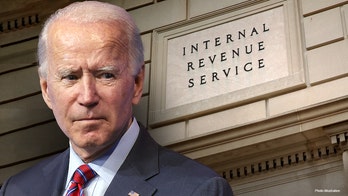
With the incoming House GOP majority dead set against earmarks and President Barack Obama urging a crackdown, defenders of earmarks -- mostly Democrats but with a few Republicans mixed in -- are swimming against a powerful tide. (AP)
President Obama pledged in August to cut all pork barrel projects from defense spending, threatening to veto any swollen bills that came across his desk -- a pledge shattered by nearly 2,000 pet projects that have made their way into the defense budget.
"If a project doesn't support our troops, we will not fund it," he said to a meeting of the Veterans of Foreign Wars in Phoenix. "If a system doesn't perform, we will terminate it. And if Congress sends me a defense bill loaded with that kind of pork, I will veto it. "
Just last week, Obama broke his promise as he signed into law the 2010 Defense Appropriations Bill -- a $636 billion behemoth loaded with $4.2 billion of pork.
"We should be concerned that we're getting ripped off," said Ryan Alexander, president of the watchdog group Taxpayers for Common Sense.
"The earmarking process is the beginning of figuring out whether or not we're getting ripped off. Absolutely dollars are being directed, not based on the best decision making process."
In all, Congress added in 1,720 pet projects, including:
∙$5 million for a visitors center in San Francisco
∙$23 million for indigent health care in Hawaii
∙$18 million for the Edward Kennedy Policy Institute in Massachusetts
∙$1.6 million to computerize hospital records in Oakland
∙$47 million for anti-drug training centers around the country
∙$20 million for the World War II Museum in Louisiana
∙$3.9 million grant to develop an energy-efficient solar film for buildings
∙$800,000 for minority prostate cancer research
∙$3.6 million for marijuana eradication in Kentucky
∙$2.4 million for handicap access and a sprinkler system at a community club in New York
Lawmakers also added $5 billion for two destroyers, 10 C-17 cargo planes and to develop a jet engine the Pentagon neither wants nor needs. Critics call it classic pork -- projects that may save jobs, but not money.
"There is a reason they are added to the Defense appropriations bill, because everyone in Congress knows this is a must-pass piece of legislation", said Todd Harrison, a budget studies fellow at the Center for Strategic and Budgetary Assessments.
Despite the billions in pork, the White House says it's making progress. The earmarking total is 14 percent lower than it was on last year's defense bill, and the Obama administration says federal agencies found more than $19 billion in contract savings for 2010. The president has also succeeded in killing funding for the pricy F-22 Joint Strike Fighter and a new presidential helicopter.
Members of Congress are also defending their earmarks. Senator John Kerry, D-Mass., who added the Ted Kennedy Institute to the defense budget, says it is a tribute to the late Senator's leadership on military technology and safety for our troops.
Senator Mary Landrieu, D-La., says she was "proud" to secure $20 million for a new wing of the National World War II museum in her home state.
But a study by the Center of Defense Information says earmarks like those in this bill -- including those for the solar film, prostate cancer research, and the New York sprinkler system -- mean less money for pilot training, supplies, repairs and ammunition.
Harrison is especially disappointed Congress cut $300 million from a successful counterinsurgency program used by Army field commanders.
"That money is used by commanders on ground in Iraq and Afghanistan to fund small projects that help win over the local population," he said.




